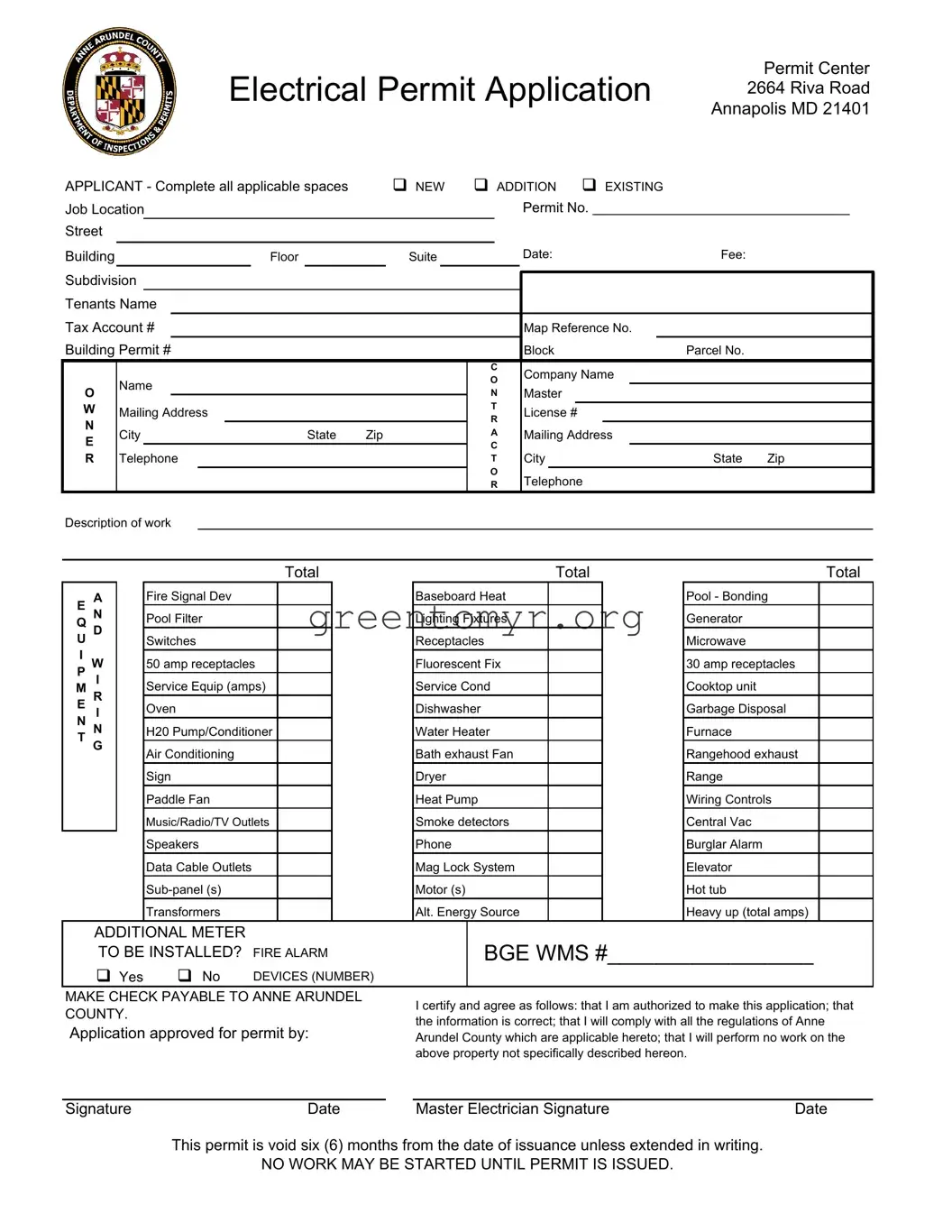The Anne Arundel Application Electrical Permit form is a crucial document for anyone planning to undertake electrical work within Anne Arundel County, Maryland. This form allows applicants to declare the specifics of their projects, whether they are initiating a new installation, adding to an existing system, or conducting repairs on current electrical setups. Key sections require applicants to provide detailed information such as job location, building permit number, and the nature of the work being performed. The form covers a broad range of electrical components including lighting fixtures, generators, and heating systems, ensuring that every aspect of the planned work is accounted for. Moreover, applicants must include their contact information, including mailing address and phone numbers, along with relevant licensing details. It's important to note that the form also specifies the fees associated with obtaining the permit, as well as certification that the applicant is authorized to apply and agree to comply with local regulations. If a project involves special features such as fire alarms or additional electrical meters, these must be indicated clearly on the application. Lastly, the importance of waiting for permit approval before any work commences cannot be overstated—doing so ensures compliance and safety throughout the electrical installation process.

